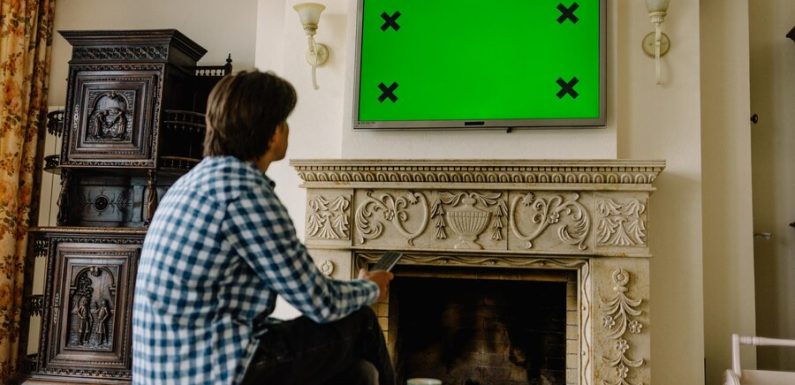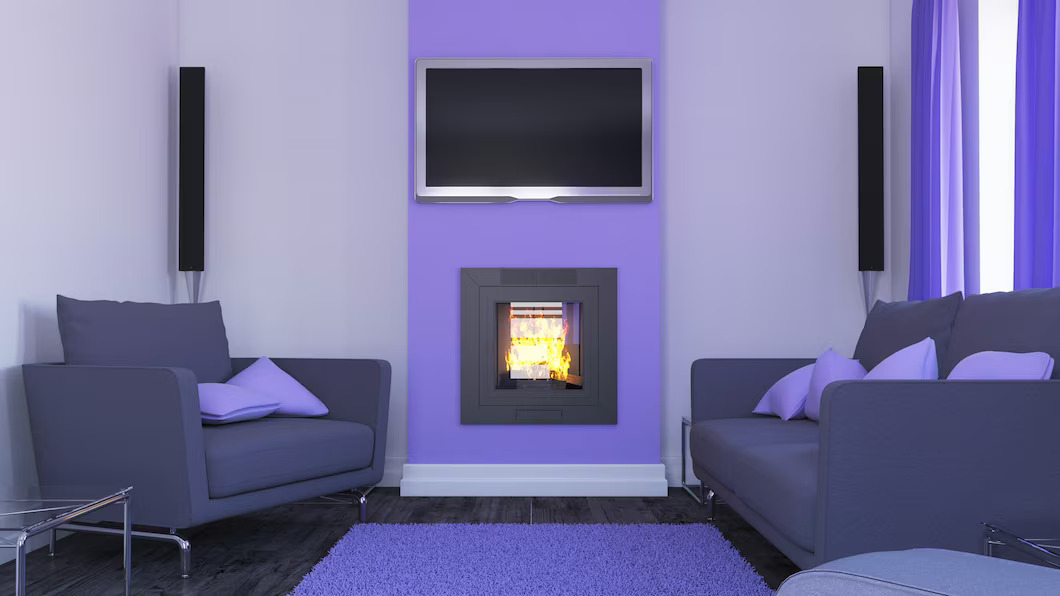
Are you looking to create a stylish and functional space by hiding your TV wires and concealing your fireplace? Building a false wall can be an excellent solution. According to a survey conducted by Houzz, a popular home renovation and design platform, 44% of homeowners who renovated their homes in 2020 included an accent or feature wall as part of their project. False walls are particularly popular in small homes or apartments, where every inch of space counts. In a survey of 500 UK homeowners by Rated People, 70% of respondents said they would consider building a false wall to create more space in their homes.
In this guide, we will walk you through the step-by-step process of building a false wall for your TV and fireplace. With the right materials, tools, and techniques, you can achieve a seamless integration that enhances the aesthetics of your room. Let’s dive in!
Understanding False Walls
A false wall, also known as a floating wall or a feature wall, is a non-load-bearing wall built in front of an existing wall to create additional space or hide certain elements like wires, pipes, or a fireplace. It provides a sleek and modern look while offering practical benefits.

Benefits of False Walls
False or partition walls are non-load-bearing walls used to divide a room into smaller spaces. They are made from various materials, including drywall, wood, and metal. False walls offer several benefits, including:
- Flexibility: False walls can be easily moved or removed, making them a great option for temporary or rental spaces.
- Privacy: False walls can provide privacy between different room areas, such as a bedroom and a living room.
- Soundproofing: False walls can help reduce noise levels between different room areas.
- Security: False walls can help deter burglars by making it more difficult for them to access different room areas.
- Aesthetics: False walls can add visual interest to a room. They can be painted, wallpapered, or decorated in anyway you like.
In addition to these benefits, false walls can also help improve a room’s energy efficiency. By blocking drafts and reducing noise levels, false walls can help to keep the room cooler in the summer and warmer in the winter.
Planning Your False Wall Project
Before embarking on your false wall project, careful planning is essential. Follow these steps to ensure a successful outcome:
Assessing the Space
Start by evaluating the available space in your room. Consider the dimensions, layout, and any obstacles that might affect the installation of the false wall. Take accurate measurements to determine the required dimensions of your false wall.
Determining the Wall Location
Identify the ideal location for your false wall, considering the position of your TV and fireplace. Choose a spot that optimizes viewing angles and allows for proper ventilation for the fireplace.
Measuring and Marking the Wall
Using the measurements obtained earlier, mark the dimensions of the false wall on the floor and ceiling. Use a tape measure and a level to ensure accuracy. This step will serve as a guide when building the wall frame.
Materials and Tools Needed
To build a false wall for your TV and fireplace, gather the following materials and tools:
- Measuring tape and level for accurate measurements
- Circular saw or handsaw for cutting materials
- Screwdriver or drill for securing screws and attaching drywall
- Utility knife for cutting drywall sheets
- Stud finder for locating wall studs
- Wire cutters and electrical tools for wiring installation
Building the False Wall

Now that you have everything you need. Let’s proceed with building the false wall step by step:
Preparing the Wall Frame
Start by using a stud finder to locate and mark the studs on the existing wall. These studs will serve as anchor points for attaching the false wall frame. Measure and cut the studs or furring strips to match the height and width of your marked dimensions. Secure them to the floor, ceiling, and existing wall using screws or construction adhesive.
Installing Insulation and Wiring
If desired, add insulation between the studs for improved soundproofing and insulation. Next, run the electrical wiring through the studs to connect the TV and fireplace. Ensure all electrical connections are made safely and according to local building codes.
Adding Drywall and Finishing
Once the frame and wiring are in place, cut drywall sheets to fit the dimensions of the false wall. Attach the drywall to the frame using screws, ensuring a secure and flush fit. Fill any gaps or seams with joint compound and sand the surface for a smooth finish. Apply primer and paint to match your room’s décor.
Concealing the TV and Fireplace
With the false wall built, it’s time to conceal the TV and fireplace seamlessly:
Mounting the TV
Follow the manufacturer’s instructions to mount the TV on the false wall. Ensure proper placement and use appropriate brackets or mounts for secure installation. Hide the TV cables by running them through the false wall or using cable management solutions.
Installing the Fireplace
Consult a professional for safe installation if you have a gas or electric fireplace. Follow the manufacturer’s instructions and ensure proper ventilation for the fireplace. Use heat-resistant materials around the fireplace opening and consider adding a mantle or decorative elements to enhance its appearance.
Safety Considerations
When working with electrical components and fireplaces, safety is paramount. Keep the following considerations in mind:
Electrical Safety
Ensure all electrical connections are made by a licensed professional. Follow local building codes and guidelines for wiring installation. If unsure, consult an electrician to ensure a safe and compliant setup.
Fire Safety
If you have a fireplace, install a fire-resistant barrier behind and around it. Follow fire safety regulations and maintain proper clearance between the fireplace and combustible materials. Keep flammable items away from the fireplace and never leave it unattended while in use.
Enhancing the False Wall
To further elevate the aesthetics and functionality of your false wall, consider these options:
Painting and Decorating
Choose a paint color that complements your room’s design and apply it to the false wall. Add wallpaper, textures, or decorative elements to make it more visually appealing. Add trim or molding around the edges for a polished look.
Adding Shelves or Cabinets
Maximize the storage potential of your false wall by incorporating shelves or cabinets. This provides additional space for displaying decor items, storing media devices, or organizing DVDs and other accessories. Customize the shelves or cabinets to fit your specific needs and style.
Conclusion
Building a false wall for your TV and fireplace is a fantastic way to create a sleek and functional space while concealing wires and adding a focal point to your room. By following the steps outlined in this guide, you can successfully construct a false wall that enhances the aesthetics of your living area. Remember to prioritize safety and consult professionals whenever necessary. Enjoy the process and the transformation it brings to your home!
FAQs (Frequently Asked Questions)
- Can I build a false wall alone or do I need professional help?
Building a false wall can be a DIY project, but it’s important to have some knowledge of basic carpentry and electrical work. If you’re unsure about any aspect of the process, it’s advisable to consult a professional.
- Do I need any special permits or permissions to build a false wall?
The need for permits or permissions depends on local building codes and regulations. It’s recommended to check with your local authorities or consult a professional to ensure compliance.
- Can I install a fireplace on any false wall?
Installing a fireplace in a false wall requires proper ventilation and adherence to safety guidelines. Consult a professional to determine the feasibility and suitability of your chosen false wall design.
- How long does it typically take to build a false wall?
The timeline for building a false wall can vary depending on factors such as the design’s complexity, the wall’s size, and your level of experience. It’s best to allocate several days to complete the project.
- Can I remove the false wall in the future if I want to change the setup?
While a false wall is a semi-permanent structure, it can be removed if needed. Remember that restoring the original wall’s appearance may require some restoration work.

